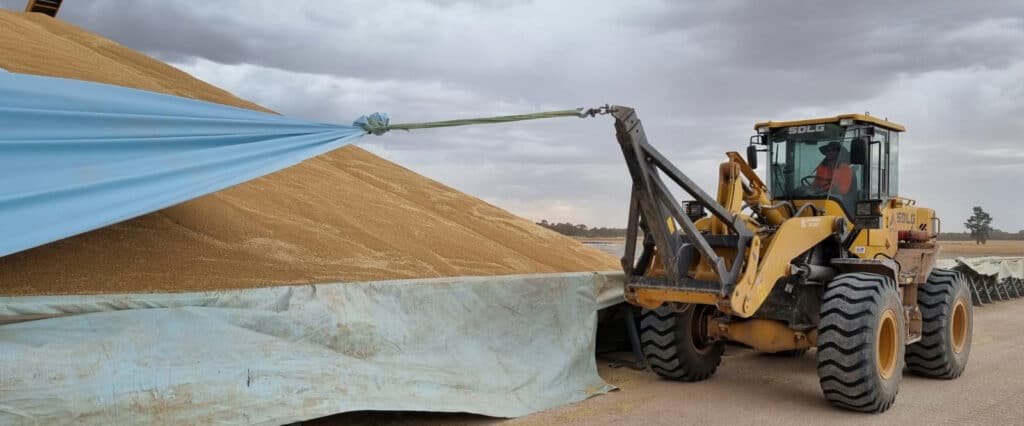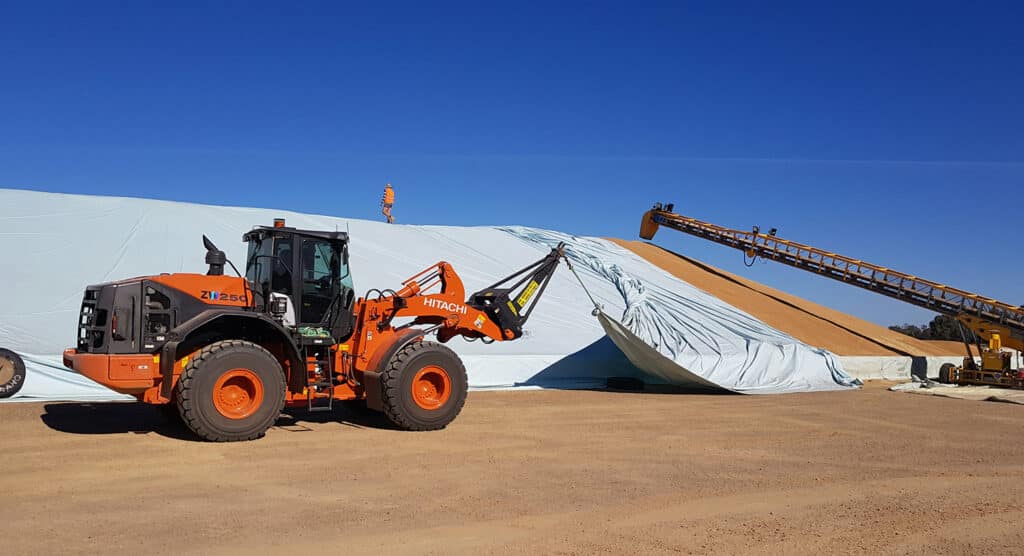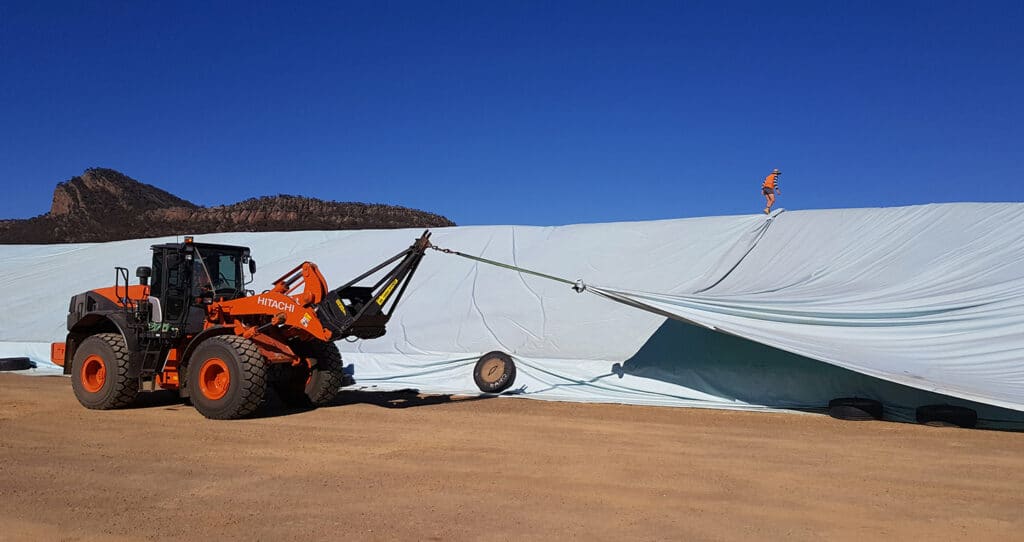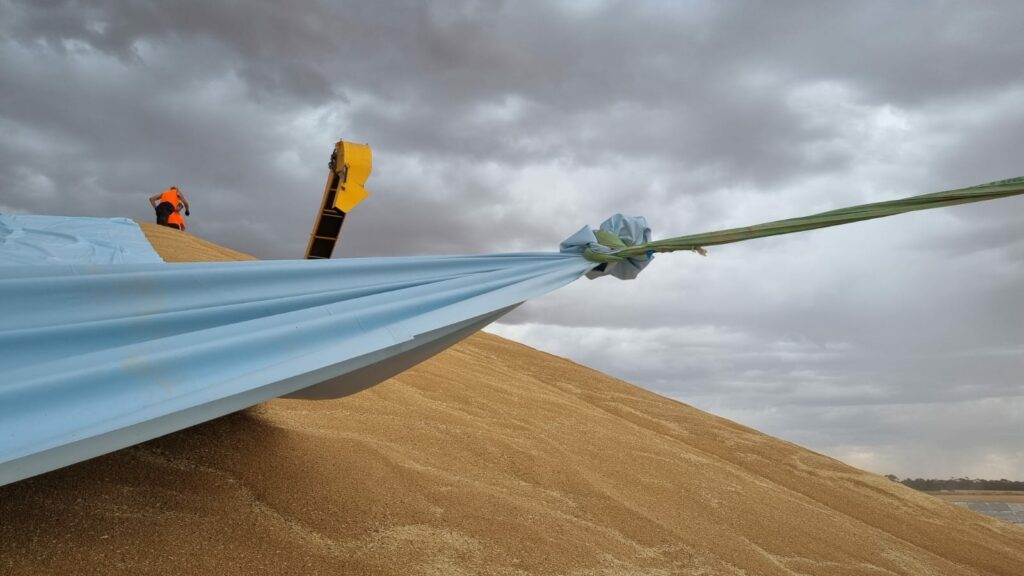
Pulling a bunker tarp over a grain bunker involves careful planning and coordination to ensure the tarp is properly positioned and secured. Here’s a step-by-step guide:
Download our Grain Bunker Construction Guide for practical and actionable advice on the construction and storage of grain in bunkers.



